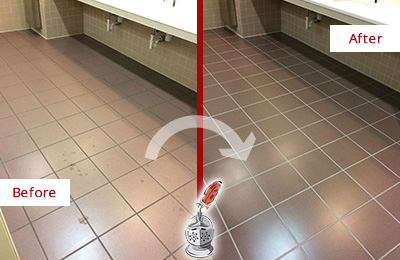Just How to Avoid Water Damage in Your Bathroom
Just How to Avoid Water Damage in Your Bathroom
Blog Article
Right here in the next paragraph you might get more sound news in relation to How to Prevent Bathroom Water Damage.

The shower room is exceptionally susceptible for damp buildup and prospective water damages as a result of the frequent use of water in it. This post supplies easy assessment strategies to help spotting water damage hazards.
The constant use water in the bathroom makes it extremely vulnerable for moist build-up and also possible water damages. By inspecting it routinely, you can decrease water related damages.
The following set of evaluations is simple to do and also need to be done once in every 3 months in order to maintain your washroom healthy and also to prevent potential water damages caused by the tub, the shower, pipe joints as well as plumbing, sinks, cupboards, as well as the bathroom
Do not disregard doing these assessments and also be complete while doing them. Bear in mind that these basic assessments can conserve you a great deal of money by offering early indicators for water damage
Bathtub and Shower
The shower and bathtub call for unique interest and upkeep. Inspect the ceramic tiles and change if split. Ensure that there is no missing cement in between the ceramic tiles. Inspect and also change broken caulking at joints where the wall surfaces fulfill the floor or the bathtub. Obstructed drains and pipelines issues will protect against the tub from drying and also might indicate significant issues beneath the bath tub. Talk to a professional quickly to avoid structural damages. Pay attention to stainings or soft areas around the bathtub walls as they might show an inner leakage.
Plumbing
Signs for water damage are tough to find because most pipelines are set up inside the walls.
Pay unique interest to flooring and also walls moisture and also spots as they might suggest an unnoticeable plumbing trouble. Inspect dampness levels in adjacent rooms too.
Sinks and Cabinets
Sinks and also cabinets are subjected to moisture as well as moisture everyday and also are frequently ignored. Inspect frequently under the sink and also on the counter top over it. Fix any type of drip in the catch as it may suggest drainpipe problems. Browse the sink, slow-moving draining pipes might show a blocked drainpipe. Change sink seals if they are broken or loosened.
The Commode
The toilet is a prone water joint. Check the water lines as well as look for leaks around the toilet seat, in the pipe, and also under the water tank. If you discover any kind of signs of wetness on the flooring around the commode, check for leaks in the toilet edge and also tank seals.
Understand that hanging bathroom dish antiperspirants increases the possibilities for blockages.
Water Damage Signs In The Bathroom To Avoid Cleanup
Musty smell
This is one of the easiest signs to catch because musty smells are so odorous. The damp, earthy, moldy smell should be a big red flag. The smell will develop when moisture gets trapped in surfaces, and begins to facilitate mold growth. Leaking pipes under cabinets, inside walls, and behind shower fixtures will cause moisture to stay trapped and not dry, which will lead to mold growth and spread. As soon as you notice any musty smells in your bathroom, have it checked for hidden water damage and cleanup signs.
Visible mold
If the smell isn’t there to give it away, sometimes you will actually see mold growth. Finding mold in your bathroom is a serious problem, because mold is very harmful to your health. By the time mold growth is visible, it also means that water damage has already occurred and been present for some time. The only way the mold problem can be resolved is to find the source of the moisture and get it stopped. To safely and adequately remove mold, you need to have professionals handle the remediation. Do not waste any time in getting mold problems addressed, fixed, and sanitized so that you can protect you and your family from the many respiratory symptoms caused by mold exposure.
Damaged floors
Bathroom floors should be able to withstand some exposure to water while still remaining in good condition. However, when excess exposure or water leaks occur, they will begin to damage even the most water-resistant flooring. If you notice any cracking, bubbling, staining, or warping on your bathroom floors, there is probably a water leak somewhere causing the distortion. If you notice areas of the floor have become softer, or even have a spongy feeling, there is probably damage to the subfloor. Subflooring is typically made up of plywood. When plywood is exposed to water or moisture, it will absorb it. Once it has become saturated, the weight of the excess water will cause the wood to swell and soften. Check the floors in your bathroom frequently to catch any of these sings before they lead to damaged subflooring.
Changes on walls
When water leaks behind walls, it will cause changes in the drywall. Peeling plaster, blistering paint, and soggy wallpaper are all good indicators that excess water is building up behind the wall. Water leaking behind drywall will cause it to swell and be soft to the tough. If you start to notice gaps along the trim of your walls, or where tile meets the wall, it could also be a strong indicator that there is a leak behind the wall. Any changes, distortion, or damage on the walls should be evaluated as soon as you notice it to prevent further water damage and cleanup.

As a fervent person who reads about How to Fix a Water Damage Bathroom, I was thinking sharing that piece of content was smart. Sharing is caring. Helping others is fun. I value reading our article about Looking for Signs of Water Damage in the Bathroom.
Request An Estimate Report this page